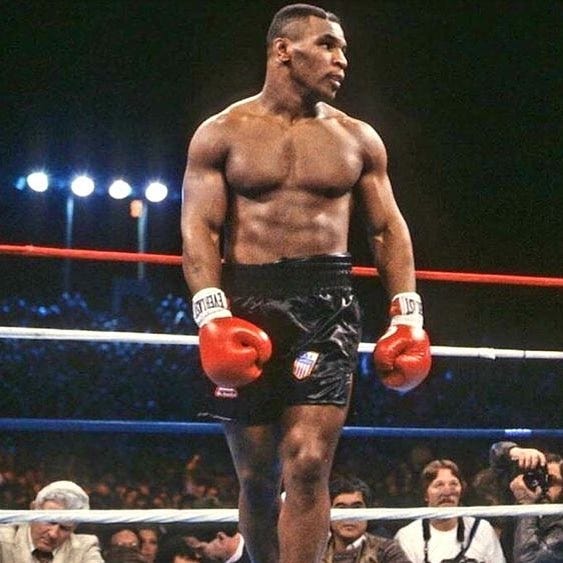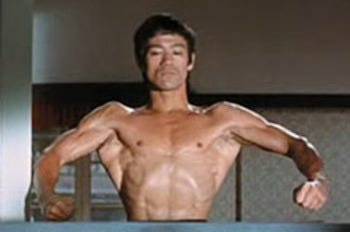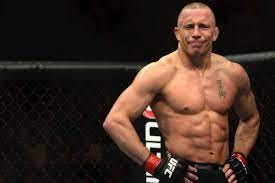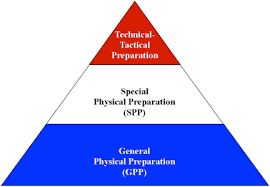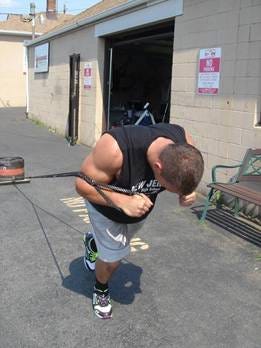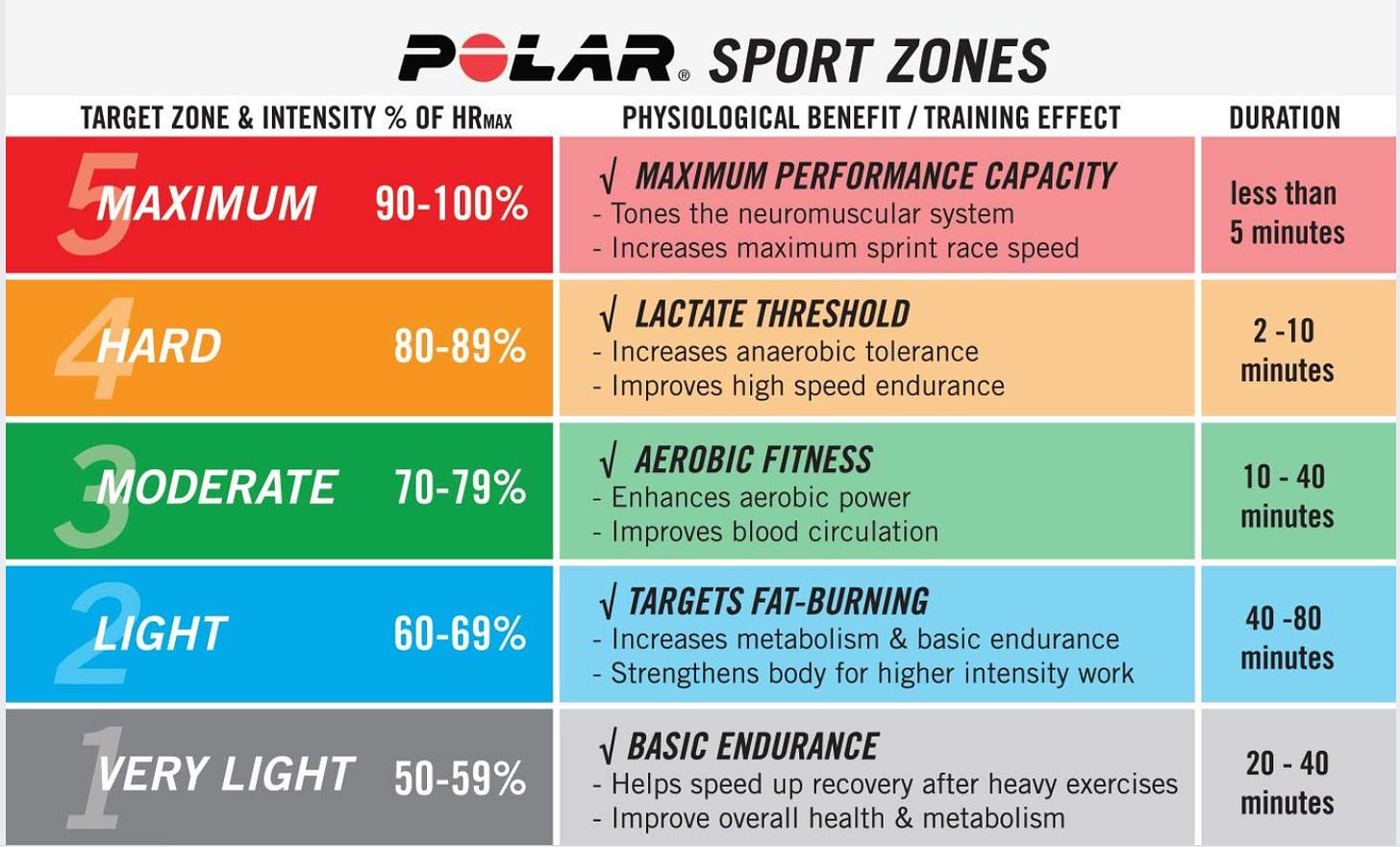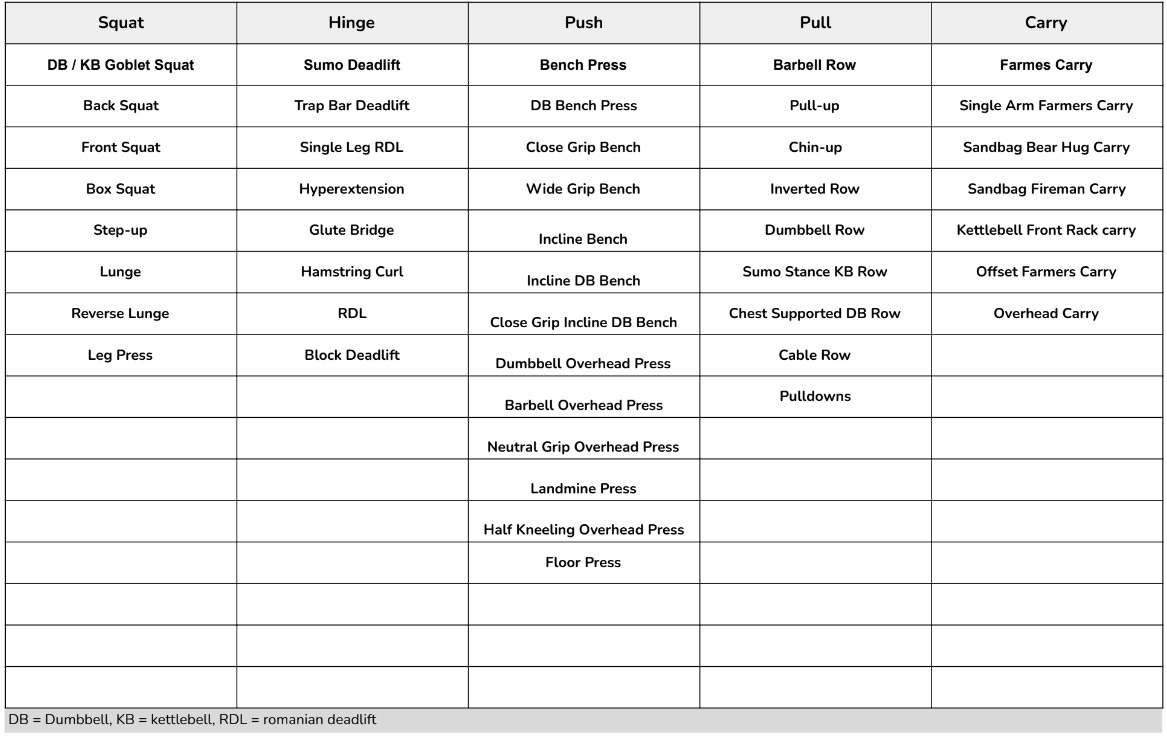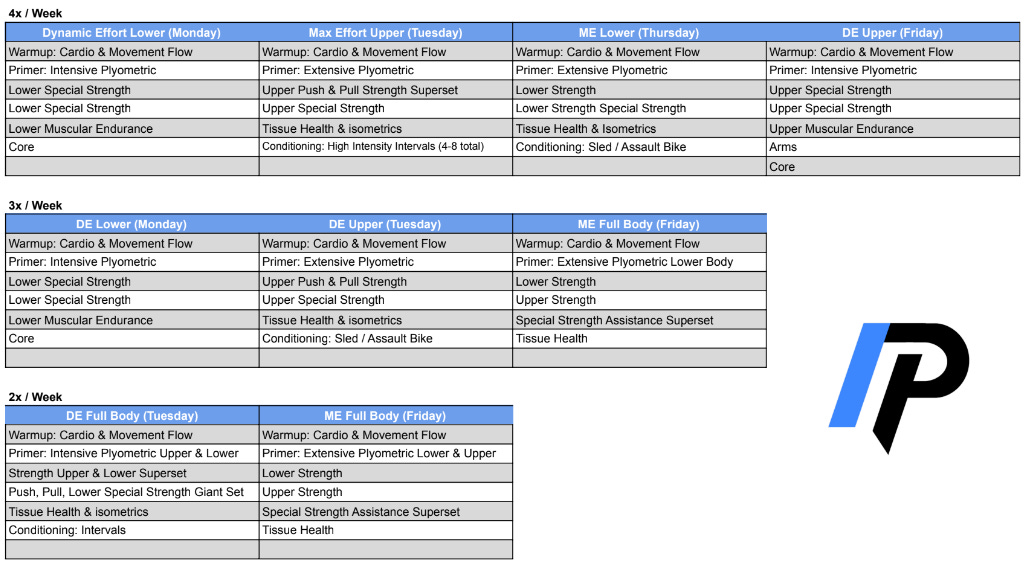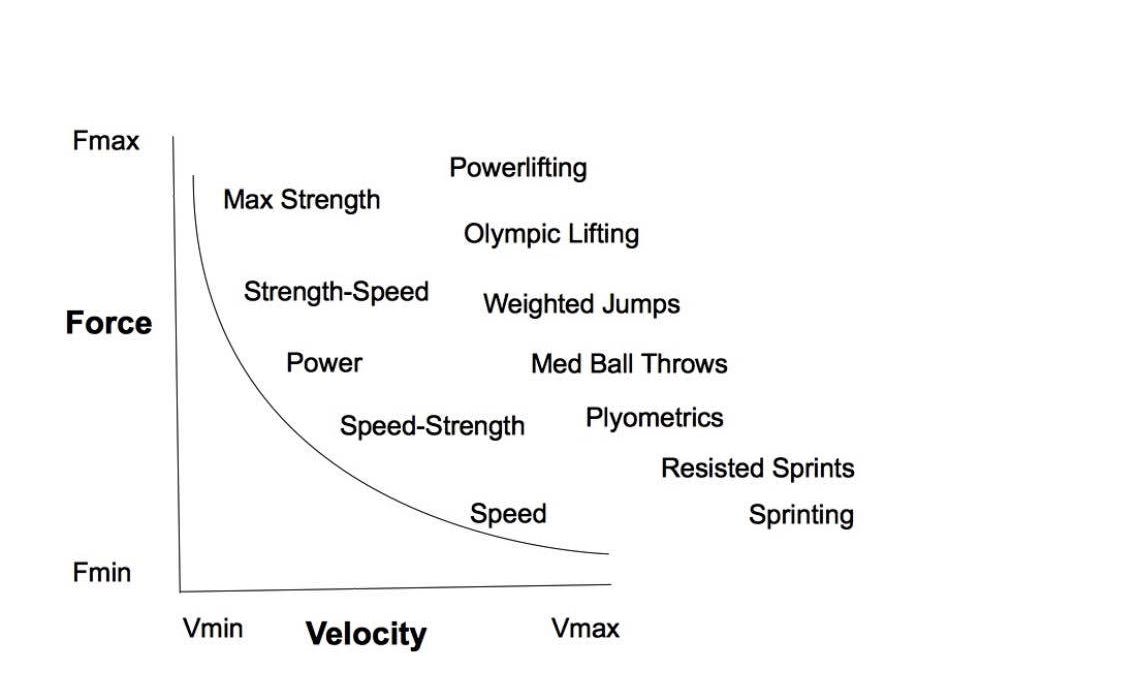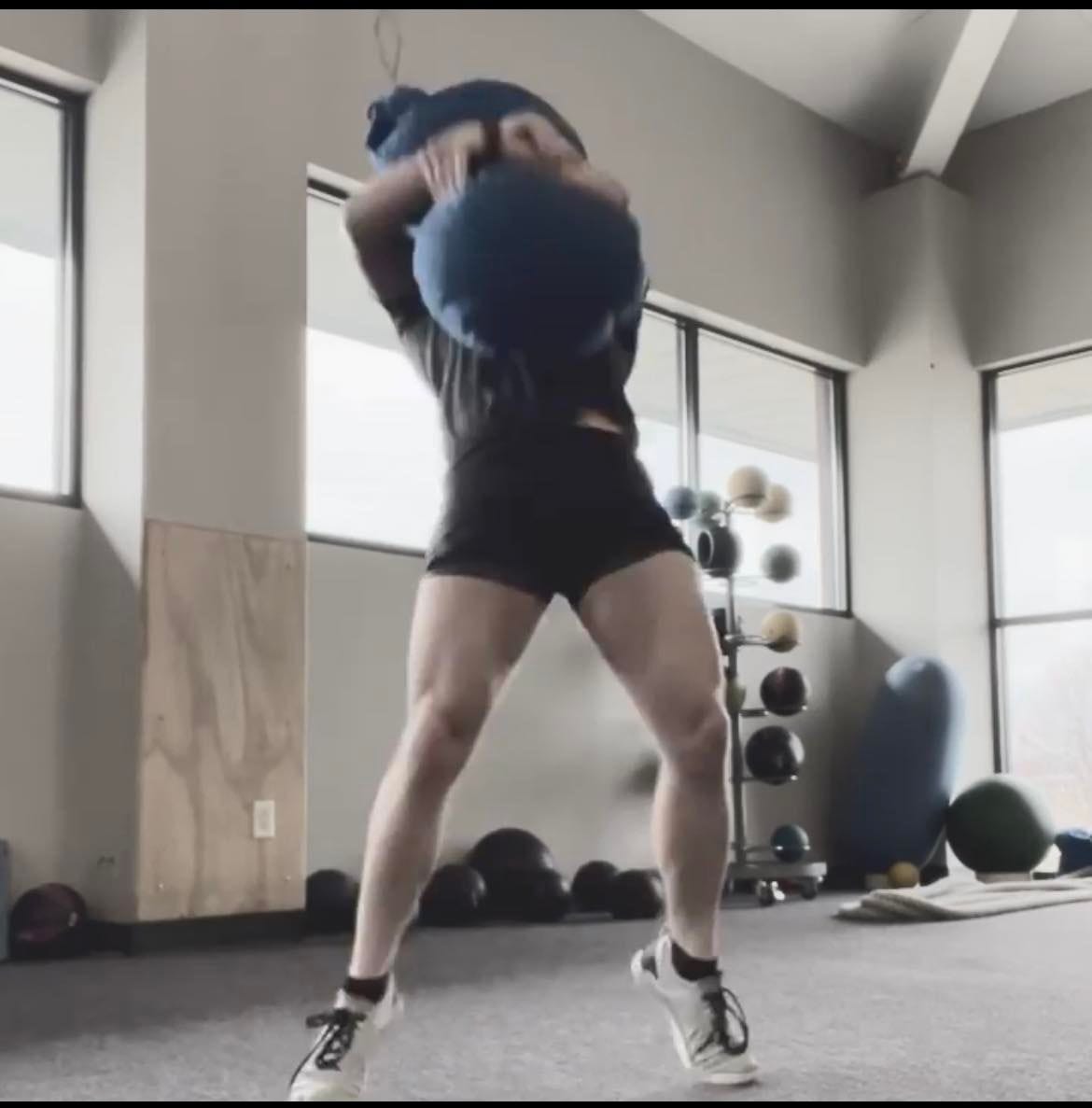The old adage in combat sports, especially boxing, has been that lifting weights makes you slow. It doesn’t unless you’re training like a bodybuilder, and even so, there is some value in adding muscle beyond just aesthetics. Muscle is a meat suit of armor surrounding your skeleton. Unlike fat tissue, muscle can contract, so from that standpoint it’s also more functional for improving force output, stability, and preventing wear and tear on the joints.
Body Weight Training For MMA & Combat Sports
I’m going to take a hard stance here and say body weight training alone is not enough. We have examples of athletes with great physiques that did predominantly train with body weight movements. Examples include Mike Tyson, Bruce Lee, and George St Pierre. There are a couple of problems with these examples that people forget to consider.
1.) Never let an exception prove a rule. Most of these men are gifted mentally or physically on a structural or biochemical level sometimes completely imperceptible to the human eye. It’s actually MORE common for high level athletes to weight train than it is for them not to.
2.) Most of them trained with weights still, it just didn’t make up a majority of their training. There’s documentation of Mike Tyson doing barbell shrugs and George doing Olympic lifts.
3.) Just because these people didn’t do much lifting, doesn’t mean that they’re better for it. In another universe where Mike Tyson did lift weights, he may have even been more powerful and explosive, not less. You never truly know.
4.) Most importantly, you aren’t heavy weight world champion Mike Tyson. The same man that threatened to eat somebodies children. You have different strengths, weaknesses, goals, and physiology. Doing exactly what they do out of a cookie cutter template would be stupid.
Can you get by JUST body weight training? Yes.
Are the odds in your favor that you’ll have massive success and prevent unnecessary injuries by doing so? Unequivocally: No.
Strength & conditioning is the great equalizer; allowing otherwise weak and mechanically disadvantaged athletes to step into competition with physical traits that rival, or mismatch, their gifted opponents physical arsenal. Those that don’t weaponize their body might as well be bringing a pool noodle to a knife fight.
How To Train For Combat Sports
in my opinion, combat sports are more complex to train for than field sports since there is less predictability, typically higher frequency, and intensity of training, and a lot of physical trauma. This makes recovery difficult enough before adding anything to sports specific practice.
Managing volume and load is critical for any training plan. Doing too much will just dig a deeper hole that will cause performance to decrease. We want a dose of training that compliments the qualities it’s trying to improve. This means at first using the smallest dose possible and slowly increasing volume and intensity as your fitness level improves.
The initial phase of training should be to build general physical preparation (GPP). GPP is just what it sounds like, improving general fitness. This doesn’t mean hitting pads or sparring; those activities are specific fitness. GPP is the foundation that all other qualities rest atop of, “The bigger the base the taller the pyramid”.
GPP For Combat Athletes:
Sled drags
Loaded Carries
High repetition band exercises
Aerobic Conditioning (running, biking, swimming, jumping rope)
Traditional strength training
An underrated aspect of training for combat sports is zone 2 - zone 3 or aerobic training. Intervals are used very often and are a great tool, however the adaptations one gets from true aerobic conditioning are nothing to shake a stick at. Increasing capillarity and mitochondrial density allows the body to more efficiently use oxygen dependent systems for energy. In turn, you rely less on anaerobic systems, delay fatigue, and recover quicker between bursts of activity.
Intervals build the horsepower while the aerobic system is the fuel tank. What good is a car that can go 0 to 60 mph very fast but can only go 10 miles before needing to refuel? Since combat sports require repeated bouts of high intensity activity, the base of the pyramid should be very wide for improved performance in the ring.
Aerobic Conditioning
Aerobic conditioning is often also referred to as zone 2, zone 3, or low intensity steady state cardio depending on the context. It is most commonly around 60-70% of estimated heart rate max (HRmax). It’s a pace you should be able to hold a conversation but probably not sing comfortably. This is a slow pace. You’re not trying to always die in training, again this comes back to load management and digging the hole. The deeper you dig the hole, the harder it becomes to recover (fill the hole back up) and the more you will begin to experience the negative side effects like muscle loss, increased stress response (elevated cortisol & low HRV), lack of energy, decrease in performance, and greater risk of injury.
I recommend performing aerobic training (Zone 2-3) 2-3 times per week for 20-45 minutes if you’re super out of shape or 1-2 times per week for 20-45 minutes if you’re in better shape. 20 to 45 minutes is a broad time range and depending on the mode (run, bike, swim, elliptical, stairs, etc.) you select you may need to adjust the time. Start toward 20 minutes and work your way up to 45 minutes by simply adding 3-5 minutes each week after a couple of weeks over the course of 8 to 12 weeks.
How to calculate estimated HRmax:
220 - [Your Age ] = HRmax
This article would need to be the length of a textbook to fully explain periodization strategies in-camp, off-camp, and how to personalize them for the athlete so i’m going to give you a practical tip; be smart. Don’t do much aerobic conditioning? Probably do it longer. Only do aerobic conditioning? Probably do some intervals. When in doubt, simplify your thought process and don’t get stuck in your head.
If possible, I would avoid adding aerobic training immediately before or after resistance training or practice. Place the cardio days between lifting sessions or at least a few hours before or after an upper body session that way they don’t interfere with the lower body training as much.
Resistance Training
Just because you’re lifting doesn’t necessarily mean you’re “strength training” or “bodybuilding”. Although aspects of bodybuilding training can be incorporated into a well rounded strength and conditioning program, the program itself shouldn’t resemble a bodybuilding routine. As a fighter, having a leg, arm, chest, shoulder, and back day is a silly idea unless your only goal is to put on mass. Even if the goal is to exclusively put on mass, i would still recommend the upper lower split.
Training split for 4x a week
Day 1 Lower (Dynamic Effort, Higher Volume, Lower Intensity)
Day 2 Upper (Max Effort, Lower Volume, Higher Intensity)
Day 3 Lower (Max Effort, Lower Volume, Higher Intensity)
Day 4 Upper (Dynamic Effort, Higher Volume, Lower Intensity)
Training Split for 3x a week
Day 1 Lower (Dynamic Effort, Higher Volume, Lower Intensity)
Day 2 Upper (Dynamic Effort, Higher Volume, Lower Intensity)
Day 3 Full Body (Max Effort, Lower Volume, Higher Intensity)
Training Split for 2x a week
Day 1 Full Body (Dynamic Effort, Higher Volume, Lower Intensity)
Day 2 Full Body (Max Effort, Lower Volume, Higher Intensity)
Movement Selection
Compound movements should be the foundation for any athlete. Compound movements are multi joint exercises that work more than a single muscle group at a time. As opposed to isolation movements, like a bicep curl, that would only work one muscle group. Training is stress. Stress is only good if you’re able to recover from it and make an adaptation. The hormonal response you get from free weight movements (barbell, dumbbell, kettlebell, sandbag) is also typically greater than that from isolation movements on a machine.
I like to divide movements into 5 primary categories:
1.) Push
2.) Pull
3.) Hinge
4.) Squat
5.) Carry
All 5 movement types should be hit within a week to some extent to provide a balanced program. Below you can see a list of movements for each category. This is not an exhaustive list, there are more you can do however it’s wise to only pick 2 to 5 of these movements at first before branching out to more.
Training Structure
Below you can see the training template I am personally using for 4x a week training. I recommend a similar layout for a weekly structure if the plan is to train 4x a week. Avoid performing 3 resistance training sessions on back to back days if possible. Doing that along with your combat skills training or classes could be a lot to recover from.
This is my template, this doesn’t mean it should be yours. That being said, I would recommend something similar in nature. When creating a program it’s important to strengthen weaknesses but also to exploit strengths. Use exercises and special strengths that most fit your needs. For grappling based sports I would include carries in the tissue health and isometrics section for example. Along with more emphasis on the elbow joint in that section.
Examples of Special Strengths:
Isometrics
Speed Strength
Strength Speed
Power
Power Endurance
Speed
Hopefully this article gave you some structure about planning your training. The template is super generalized simply because I don’t know all of your goals. Find the exercises that will yield you the best results. This starts with compound movements but you should find those with the best transfer to whatever your game is.
Find your physical weaknesses and attack them relentlessly. Find your physical strengths and exploit them, your opponent should feel your strengths; continually improve on the things you do really well to further dominate your competition and to cultivate your style. I always believed that for sport you should lean into the things you are good at, you’re probably really good at them for a reason. Training is no exception; if you’re strong, don’t just maintain your strength. Get even stronger. If your conditioning is good and you wear people down, great, keep hammering it just at a lower dose to bring other qualities up.
Lastly, for grappling based sports (wrestling, bjj, judo, mma) I would incorporate a lot of conditioning that emphasizes a high pressure load. This is especially present in exercises like heavy carries, yoke walks, back squats, or sand bag exercises. You want to be able to pump blood through that pressure load. Working with heavy weight for endurance is mimicking grappling and is a much different physiological adaptation than you can ever get from jogging or skipping rope.
If you need help adjusting this template for yourself or your goals, shoot me a DM on instagram (@integritperformance), send me an email (training@integritperformance.com), or leave a comment. I’d be happy to help.
“There is nothing outside of yourself that can ever enable you to get better, stronger, richer, quicker, or smarter. Everything is within. Everything exists. Seek nothing outside of yourself.”
-Miyamoto Musashi




